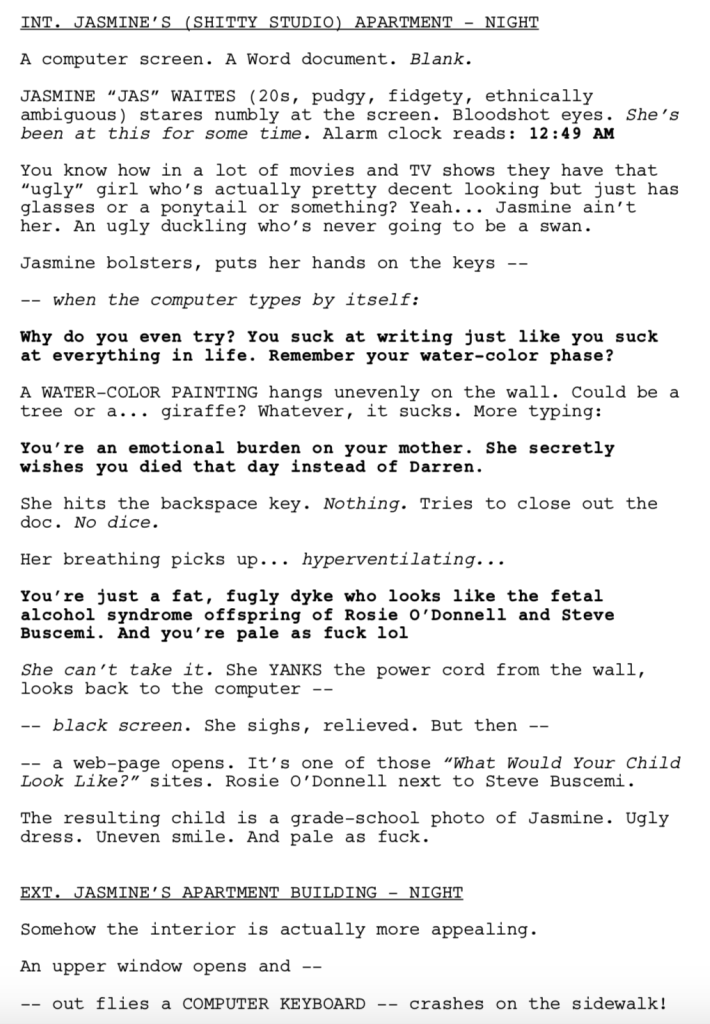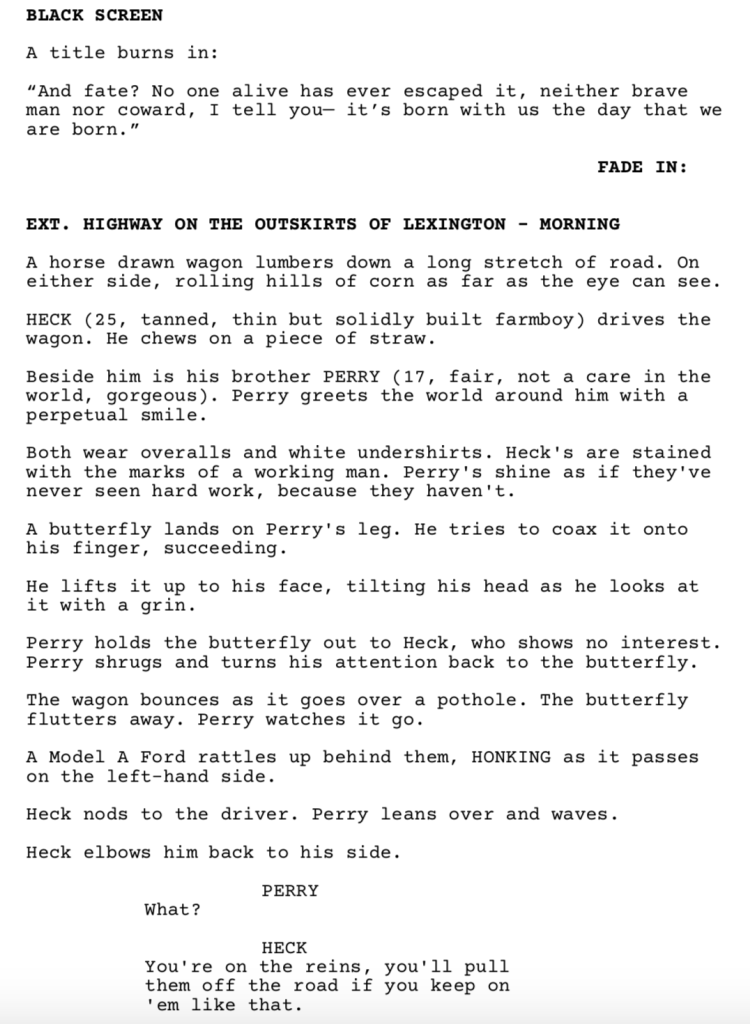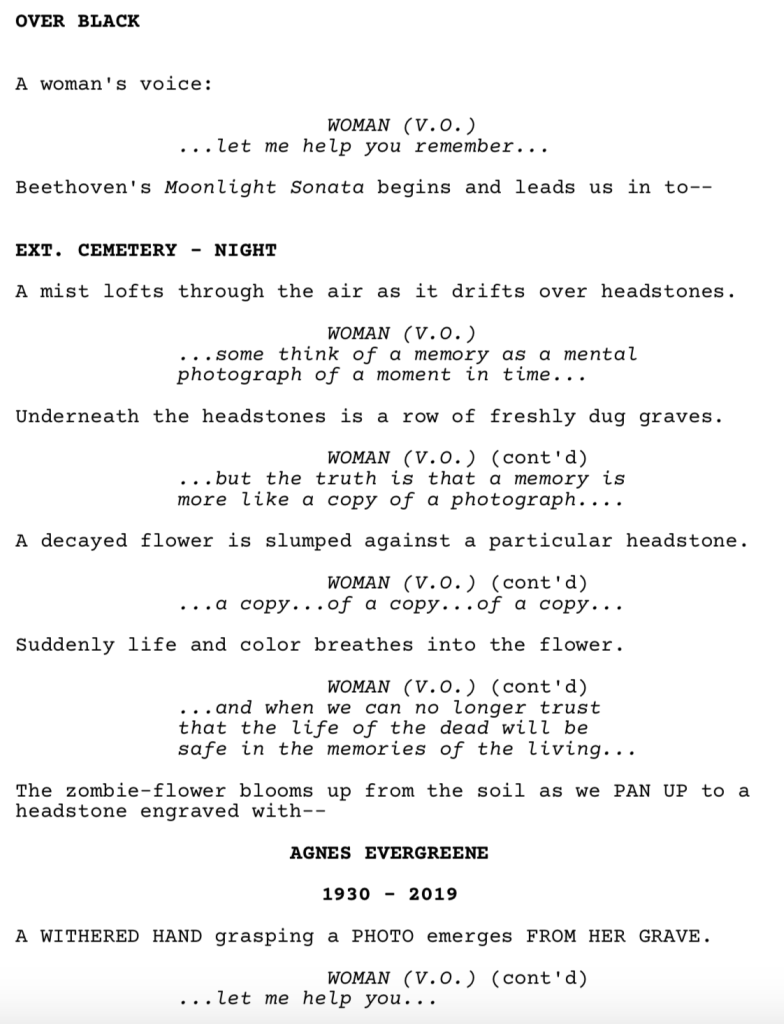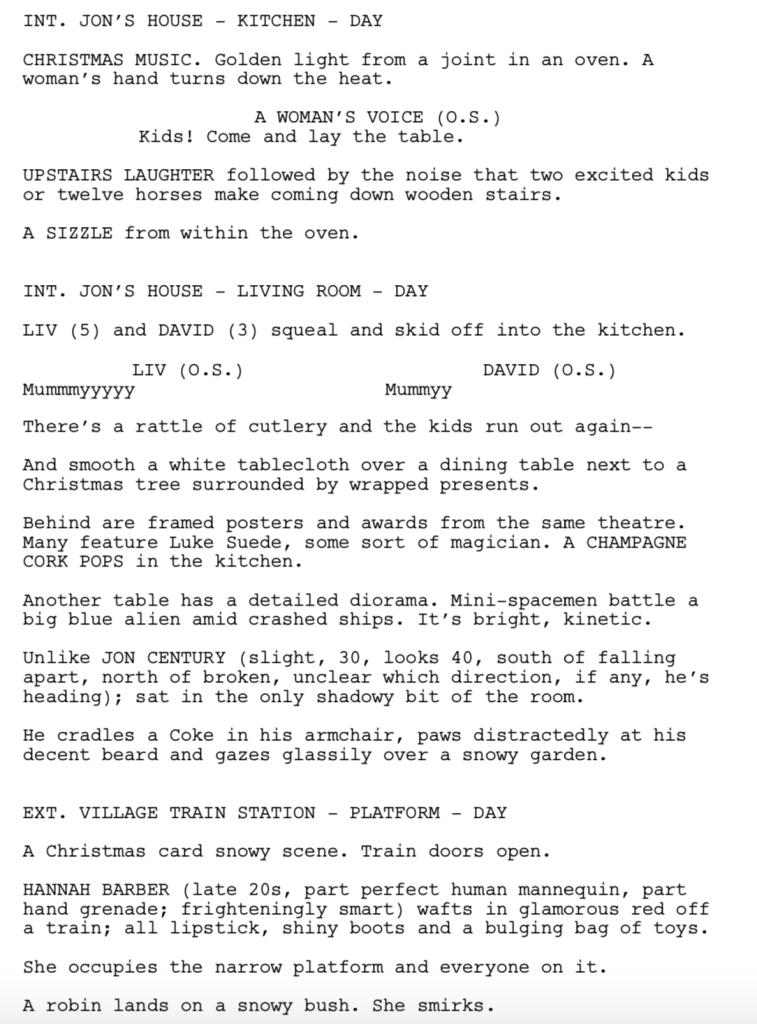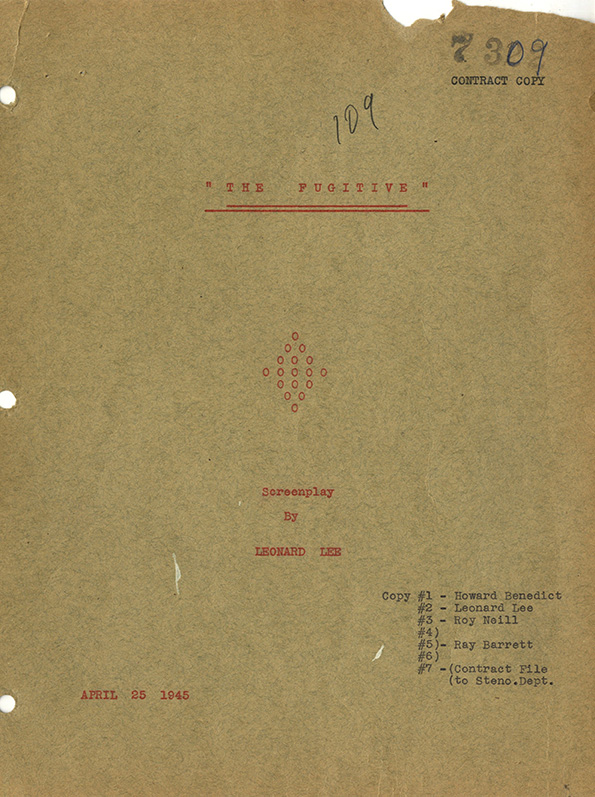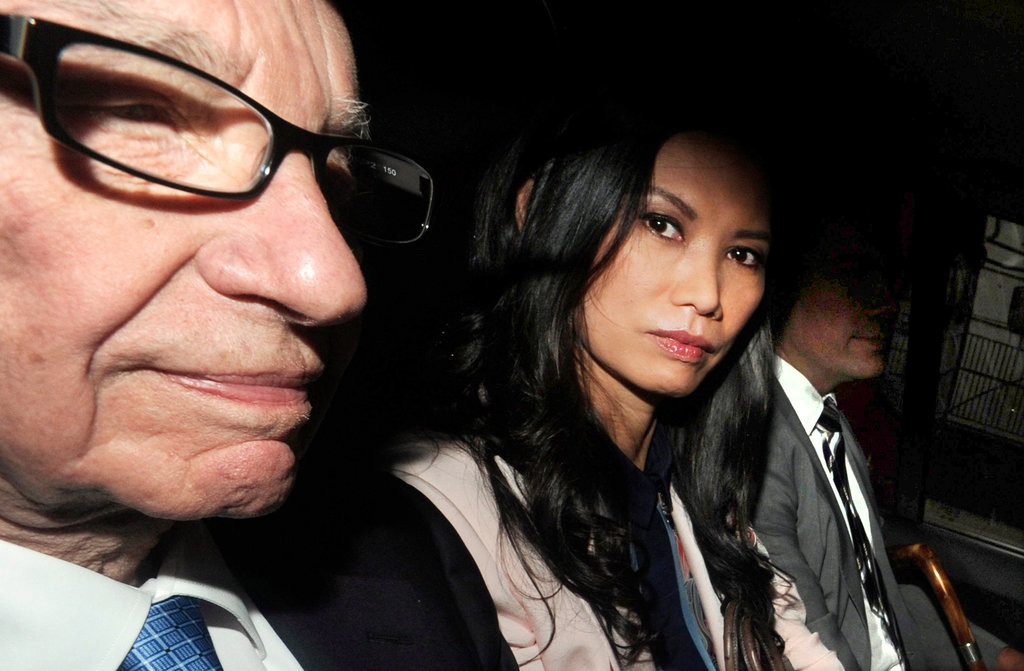I really really really really really hope Detective Pikachu bombs this weekend. The last thing I need is for that film to become a franchise and have to endure Pikachu promotional tours on a yearly basis. I would rather watch the Sonic the Hedgehog movie than I would Detetive Pikachu. With the current Sonic face. Not even the new one they’re creating. Sadly, there are no other major releases this weekend, in the theater or on streaming. I may be forced to watch the A Quiet Place clone, “Silence.” Shudder.
Luckily, you guys have options. Five, in fact. If you haven’t played Amateur Showdown before, it’s a cut throat single weekend screenplay tournament where the players have been vetted from a pile of hundreds of entries to be featured here, for your entertainment. It’s up to you to read as much of each script as you can, then vote for your favorite in the comments section. Whoever receives the most votes gets a review next Friday. If you’d like to submit your own script to compete in a future Amateur Showdown, send a PDF of your script to carsonreeves3@gmail.com with the title, genre, logline, and why you think your script should get a shot.
Good luck!
Title: Sinking
Genre: Contained Thriller
Logline: When a lonely woman finds herself in the middle of the ocean on a sinking boat with a timid geek she just met, she must employ all her resourcefulness to keep it afloat and solve the mystery of how they got there.
Why You Should Read: The more scripts I read the more I find myself recommending a simple and focused story. With that in mind I began with a simple “what if” scenario – what if you woke up and found yourself on a sinking boat in the middle of the ocean, and the only person there with you was no help at all? Hopefully the questions of why this is happening and how/if they will survive will engage the audience and keep them hooked until the end. If not, please let me know where you checked out. Many thanks in advance to anyone who opens the script.
Title: Willowwood
Genre: TV Pilot – Comedy
Logline: When two chronic underachievers discover their reality is a mediocre teenage sitcom, they hatch a plan to inject some much needed conflict into the lives of the show’s main characters in order to save the show (and thus their reality) from cancellation.
Why you should read: Back when I was a kid, I used to love wholesome teenage sitcoms like Boy Meets World and Degrassi that portrayed a relatable high school experience while tackling the big issues that teens face: having sex, doing drugs, drinking booze, dodging STDs, etc. The only thing I thought was peculiar was how all of these hot topic issues seemed to happen to the same four or five kids. This script aims to give a voice to the other fifteen kids in the classroom that never had any lines or drama and were figuratively (and quite literally) living in the background. This script has placed in and won a few contests, with most feedback complimenting the premise and its potential for plenty of longevity and meta-humor about sitcoms and other teen shows… but now I think it need some feedback on its execution from the fans of Carson before its next round contest entries.
Title: Heck
Genre: Feature Adaptation based on The Iliad
Logline: In Prohibition-era Kentucky, a moonshiner’s plan to save the family farm goes awry when his brother steals a prized dog from a local mobster.
Why You Should Read: Heck is an inventive retelling of Homer’s Trojan War epic. Instead of Trojans vs. the Greeks, my story takes place in 1920s Kentucky, pitting a family of moonshiners against a local crime boss and his Prohibition Agent brother. Part O Brother Where Art Thou and part Lawless, it’s an epic tale of bootlegging, boxing, and of course, a giant Trojan horse.
Title: Kill Grandma
Genre: Horror/Comedy
Logline: While visiting her abusive grandmother in a mysterious nursing home, a young woman with a severe phobia of geriatrics must face her fear and commit gratuitous violence on the elderly who plan to steal her youth.
Why You Should Read: Who am I? I’m a writer named Patrick Poff who specializes in writing movies that will never be made. And I think you should review this script because … it’s called KILL GRANDMA. Thank you for your consideration. (e-mail subject line points out that this is the number 1 rated Horror-Comedy on the Black List website)
Title: LIPSTICK HITLIST
Genre: Psychological Thriller
Logline: A fragile cop gets caught in deadly game of chess with a psychotic witch who has the power to persuade others to kill for her.
Why You Should Read: 10 Cloverfield Lane. That’s why. I have watched that movie a lot. I LOVE how my take on John Goodman’s character was bedded in, then ripped up and overturned. TWICE. Until I just didn’t know what to make of him and was right there in the bunker with Michelle. I wanted to write a character like that. And mess with the reader/audience that way. —
I am also obsessed with Silence Of The Lambs and the weirdly cosy relationship between Hannibal and Clarice. So I thought flipping the sexes of those two characters would be a cool way into a post #metoo storyline. — It’s a story that ponders the idea that men might be a bit nicer to women if there was a chance of violent retaliation. — A cold-blooded female killer, who slowly gains your sympathy, then screws with you for being so gullible, then draws you back, deeper, and dares you to stand with her again. I want the reader to be pumping the air, shouting, “Yeah, go for it, kill him, stab him, HURT him” by the end.
One of the things I remember when I started out screenwriting was the paralyzing fear of producing some sort of “tell” that I was a newbie. Something in my script would act as a giant flashing marquee that lit up my status as an amateur. Many shared in this fear. There used to be entire screenwriting message boards dedicated to whether your script should have two brads on it or three. Or if your script should have a cover page attached. Strangely, many of these debates are still being had! Should you use the controversial, “We see,” when writing? Can you include camera directions?
Well I’m here to give you the REAL, the DEFINITIVE, list on what readers really care about when they’re reading a script. We’re going to put all of your old fears to bed. And maybe provide you with a few new ones. And because I’m feeling generous, I’m going to list these factors in order of importance. Finally, we’ll be able to answer that age-old question: “Will a reader toss my script if I use two spaces after a period instead of one?” Below are the top 10 things a reader cares about when reading a script…
1) Formatting – If a script is not formatted properly (correct font and margins), it’s always a harbinger of bad things to come. The good news is, if you buy screenwriting software, you don’t have to worry about this! There, I just solved the number one problem for you.
2) Insane page counts – The FIRST THING a reader does is check the page count. If they see anything over 120, they’re mad. If they see anything over 130, they’re furious. If they see anything over 140, they’ve mentally committed to skimming half your script. 100-110 pages is the optimal screenplay length. Stick with it or I’ll stick that missing third brad in your face!
3) Readability – Is the script easy to read? Do my eyes move across the page effortlessly? Do they move down the page effortlessly? Or am I stopping a lot, re-reading sentences in order to understand them? Am I confused about why a character said something? Is getting through the text like walking through quicksand? Readability is so important.
4) Engagement – Am I engaged by the story? Am I immediately pulled in? Do I want to see what happens next? Do I want to turn the page? Do I want to keep turning the pages? This goes back to the 10 Page Challenge. Hook me then continue to provide reasons for me to keep reading. If you can do this, I don’t care about any other mistakes you make.
5) Characters – Am I pulled in by a character? Am I intrigued by a character? Is a character so darn charming I fall in love with him instantly? As soon as a reader likes one of your main characters, you’re golden.
6) The dialogue isn’t bad – You’d think I’d say, “That the dialogue is good.” Sure, that would be great. But the truth is, I read, maybe, three scripts a year where the dialogue is stand-out good. When I’m reading, all I care about is that the dialogue isn’t bad enough that it draws attention to itself. Cringe-worthy lines. Try-hard banter. On-the-nose exchanges. Overtly mechanical exposition. The second I start noticing weak dialogue, the script is a passenger on the Titanic.
7) Is there anything special about this writer/script? – The large majority of the time, I’m reading bland concepts with bland, by-the-numbers, execution. I’m always looking for a script that’s got that extra kick to it. Maybe the dialogue is snappier. Maybe the writing style is charged (a la Christy Hall). Maybe the scenes are playing out in unexpected ways. If you can find a script with one elevated factor, you’re probably going to recommend that writer to other people.
8) Spelling/grammar mistakes – I’ll let one mistake slip. But when I see two mistakes early on, my faith in the script plunges. Three mistakes in the first 10 pages? Forget about it. There are screenwriters who say this shouldn’t matter. THEY’RE WRRRROONNNNG!!! I’ve got the biggest sample size to work with in Hollywood. And I can tell you that of all the times I’ve seen three spelling/grammar mistakes in the first ten pages, 99.999999% of the time, the script is doomed.
9) Confidence – Does the writer seem comfortable in the medium? Does it feel like they have a clear plan for their story? Confidence implies that they’ve been here before, which more often than not means a better script. A writer who writes tepidly, who seems unsure of their choices and looks constrained by this weird screenwriting format is a writer whose script I usually dislike.
10) They know what to do after page 45 – 15 pages after the first act ends is when 90% of screenplays fall apart. If your script is still building and still has momentum after page 45, it’s a strong indication that you’re aces with structure, providing me with mucho confidence that you can get me to the finish line.
Carson does feature screenplay consultations, TV Pilot Consultations, and logline consultations. Logline consultations go for $25 a piece or $40 for unlimited tweaking. You get a 1-10 rating, a 200-word evaluation, and a rewrite of the logline. If you’re interested in any sort of consultation package, e-mail Carsonreeves1@gmail.com with the subject line: CONSULTATION. Don’t start writing a script or sending a script out blind. Let Scriptshadow help you get it in shape first!
Genre: Biopic
Premise: (from Hit List) When an ambitious girl from the slums of China manipulates her way into marriage with a media tycoon, she becomes one of the most powerful women in the Western world. This is the story of Wendi Deng, second wife of Rupert Murdoch.
About: This script barely made last year’s Black List. It should be much higher than it was. And I have a good feeling as to why it wasn’t rated higher, which I’ll tackle later. It did much better on the Hit List, where it finished with 24 votes. There probably isn’t a better writer to tackle this than Amy Wang. She is Chinese-Australian, and completed her directing MFA at AFI in Los Angeles.
Writer: Amy Wang
Details: 127 pages
They’re baaaaaaaa-aaack.
Biopics.
You’re probably wondering why I’m reviewing this travesty of a genre again. Well, to be honest, this is one of the few biopics on the Black List that, when I heard the logline, I was intrigued. A girl rises from the slums of China to become the wife of a media conglomerate worth 20 billion dollars. That doesn’t happen every day.
Also, I’m open to biopics that take non-traditional approaches to either the narrative or the subject. For example, you couldn’t pay me 5 grand – I’m not exaggerating – to read a biopic about Rupert Murdoch. I’d rather dive head first into the world’s largest pool of quicksand. But a story about his wife – I have no idea where that story’s going to go. Which is why I want to read it. Let’s see if my curiosity paid off.
Wen Ge grew up in the slums of Xuzhou, China, the youngest of three sisters. From the second she could speak, Wen Ge dreamt of moving to the glitz and glamour of the U.S. Her sister, Wei, while not as pretty or smart as Wen Ge, is all in on this pact. They’re going to conquer America together.
They get their opportunity in college when an American refrigerator salesman traveling with his wife are trying to expand into China. Wei offers her services as a translator, and soon she and the man are having an affair. When that affair wavers, Wen Ge snatches up the opportunity and begins her own affair with him. She uses the relationship to get to America, and after the salesman divorces his wife, Wen-Ge (now “Wendi”) sees the opportunity for a green card.
Soon she starts working for Star TV, a subsidiary of Rupert Murdoch’s media empire that operates in China. As the only Chinese-speaking employee at the U.S. offices, Wendi easily moves up the ranks. When Murdoch comes into town, Wendi makes sure she’s at his big board meeting. During the meeting, Wendi tells Murdoch everything his company is doing wrong. Nobody has spoken to Murdoch like this ever. He’s immediately smitten with Wendi.
She uses that to become his personal translator, and she uses THAT to woo him romantically. Soon, Murdoch is divorcing his wife, marrying Wendi, and putting her in charge of Myspace China. Nobody around Murdoch likes Wendi. They think she’s a gold digger. And they certainly don’t know why Murdoch is putting her in charge of a billion dollar business. But Wendi is a hustler and determined to prove them wrong. Soon, Myspace is crashing. All the investors she brought in are pulling out. In a last ditch effort to save the company, she sleeps with Prime Minister Tony Blair to insure an investment. But it’s too late. The company dies, Murdoch finds out Wendi cheated on him, and Wendi’s stratospheric rise to the top of wealth and power comes crashing down.
Whoa!
Before reading this, I had no idea who Wendi Murdoch was. Now I’m obsessed with her. I did a 2 hour google deep dive, mainly image searches, where I found all sorts of wild and wacky stories about this woman. I mean, at one point she was dating Vladimir Putin!!! I’ve seen gold diggers (or “power diggers”) before. But this woman is in another league.
First off, I just want to commend the bravery of Amy Wang, the writer of this script. There are unwritten rules in Hollywood right now where, if you write about women, you have to write them a certain way. They can’t have any flaws. They can’t do anything wrong. They can’t be perceived as cruel or selfish. Female characters right now basically have to be written as perfect human beings.
So to build a story around a woman this unlikable and to fully embrace that side of her all the way through the story was a bold move. It was also the right move. The problem you run into when you start writing characters so that you get “points” from certain sections of society, is that they won’t come off as authentic. We will feel you trying to win our affections and we will rebel. There’s a reason the “Girl Power” moment in Avengers: Endgame is so controversial. It didn’t feel authentic. It felt like writers and producers trying to get woke points from Twitter. Everybody has faults. Men, women, children, all of us. To start “playing it safe” is going to lead to bland characters and blander stories. And you’re going to lose out to writers like Amy Wang, who aren’t afraid to be a little more controversial in order to be authentic.
This leads us to our next question: how do you write a hero this evil and get away with it? Wendi steals a boyfriend from her own sister. She parlays that into wrecking a home. She uses the man she stole to get to the U.S. and get her green card. She undermines her boss and all of her co-workers to get an audience with Rupert Murdoch. She cheats on her husband with a prime minister to get a business deal done. She is ruthless. Yet one of the longest-running screenwriting rules is that your hero must be likable. We must want to root for them. How does this script ignore this rule and still work?
My theory is this. And it’s based on what I was feeling while reading the script. You can offset a hero’s un-likability by making them more active. The more unlikable they are, the more active you have to make them. The reason this works is because when a character is extremely active, they’re like a bullet train. They’re shooting forward. And when something shoots forward that fast, the reader wants onto the ride, regardless of how bumpy it gets.
There’s a pivotal moment in “Wendi” where Wendi has strategically positioned herself in front of Rupert Murdoch during a big meeting about Star TV. This is a once in a lifetime opportunity, to get this close to this man. And she’s maneuvered and planned and made sure that she is going to get the best chance possible to make an impression. After Wendi speaks out of turn, asking Murdoch if the station’s recent woes will result in layoffs, Murdoch admits that they will. “I thought so,” Wendi says. “Which is why I came up with 3 plans on how to keep company growth and maintain our stake in the Chinese market. I am available to speak to you privately after this meeting if you are interested.”
This line is the essence of Wendi. She is always dealing. She’s always trying to make things happen. And that’s the real lesson here. Scripts are no different from life. In life, when you go out there and try to do things, opportunities open up. When characters go out there and try to do things, PLOT opportunities open up. You’re more likely to find fun exciting places for your story to go when your hero is running around trying to make things happen.
While I refuse to give this script an impressive, due to the fact that it’s a biopic, it basically gets a biopic ‘impressive’ at a double worth the read. This character was savage, she was relentless, she was fascinating.
[ ] What the hell did I just read?
[ ] wasn’t for me
[xx] worth the read
[ ] impressive
[ ] genius
What I learned: If there’s a genre where you can push the boundaries of how unlikable your main character is, the biopic is it. I’m not sure why this is. I think it has something to do with the audience understanding that this is a real person’s life and, therefore, they don’t care as much about liking them. As long as the character’s actions are authentic and entertaining, likability is not required.
Genre: Fantasy
Premise: The King’s nephew must travel into the countryside and defeat a giant green knight if he is to become a knight himself.
About: David Lowery made his first short film, Lullaby, at 19 years old. He continued to make lots of short films before breaking into features in 2009 with his movie, St. Nick, about a brother and sister who escape into and begin living in the woods. He has since directed A Ghost Story, Pete’s Dragon, The Old Man and the Gun, and is rumored to be involved in, gasp, another big budget studio adaptation of Peter Pan. Slumdog Millionaire’s Dev Patel will play the aspiring knight. The Green Knight is originally a character in a 14th century Arthurian poem. Talk about going back a ways for some free IP!
Writer: David Lowery
Details: 75 pages
When I saw this in the trades, I did a double take.
“A24” and “Fantasy Epic?”
“Studio that spends less than 2 million dollars on movies” and “Most Expensive Genre Ever?”
Something wasn’t lining up.
There were other questions as well. David Lowery directing?
The guy who goes off and shoots a film in 7 days with, “A Ghost Story,” and also makes giant studio fare like Disney’s, “Pete’s Dragon.”
Now that I’m writing it, it actually makes sense. Who better to make A24’s first big budget film than the guy who’s directed both extremes? Of course, maybe it isn’t a big budget film. I have no idea. I haven’t opened the script yet. Wait, I’m opening it now. 75 pages? A micro-script? What’s going on?? Am I living in a parallel reality?? Is this Thanos’s doing? I’m predicting one heck of a review.
Gawain is the 13th century equivalent of the 31 year old unemployed manchild who lives in his mother’s basement. The only thing he’s got going for him is that he’s the King’s nephew. This allows him to spend his money on hookers and booze, waking up every morning in various back alleys. Everyone feels sorry for Gawain.
Then one day while visiting the king, a giant green knight on a giant green horse storms through the castle’s front doors. He says that anyone who can strike him down with one blow can have his really cool axe-weapon. When nobody offers, Gawain uncharacteristically yells, “I’ll do it!” He walks up, the Green Knight gets down on one knee, puts up no defense, allowing Gawain to swing away and decapitate him. Except that seconds later, the Green Knight’s headless body goes and picks up his still living head, who informs Gaiwain that he must come to his home in a year’s time.
Gawain spends the next year basking in his celebrity, drinking, and dreading his upcoming journey. When the day comes to leave, he tries to hide, but the king throws him out of the kingdom, forcing him to go. And so off Gawain goes, meeting many unique people. A thief, a ghost woman looking for her head, a battlefield of dead knights, a talking fox, a swinger couple who plays games with his head, and a group of mountain giants.
Barely alive, Gawain finally makes it to the Green Knight’s quarters. The knight tells him to kneel down, just as he did. He will now chop Gawain’s head off. Gawain freaks out. He doesn’t want to do this. He leaps up, runs out of the knight’s home, jumps on his horse, rides all the way back to his home, where people assume he’s defeated The Green Knight. However, something is off. Something about our poor Gawain isn’t right. Indeed, what Gawain doesn’t realize is that he was doomed the second he ran from the Green Knight.
This one started off clunky.
We set up that Gawain is a cowardly drunk loser. Then when The Green Knight shows up and challenges someone to swing at him, Gawain hops up and says he’ll do it. This was in no way consistent with anything he had done up to that point.
But once Gawain goes off on his journey, the story picks up considerably. One of my favorite moments was when he found an abandoned home, took a nap, then was woken up by a woman asking him to find her head, which was “in a nearby river.” Confused, he dives into the river, swims to the bottom, finds an old skull, brings it back, and is greeted with a rotten headless skeleton in a dress on the bed. We learn via a few other details that this woman was murdered by her husband, who decapitated her, threw her head in the river and left. It was one of the more haunting things I’ve read in awhile.
And there was a lot of great imagery here. The field of a frozen dead knights after a long ago battle, each of them rotting inside their armor, is a trailer image if I’ve ever read one. Or there was a moment where Gawain had been tied up and left to die by a thief. As he stands there, pondering his situation, we pan slowly around 360 degrees to the rest of the landscape, as seasons pass, and when we make it around, we see Gawain’s rotted corpse, still tied there. We then pan back the way we came, reversing the process, to the alive Gawain again. We realize the shot was him looking into the future if he didn’t find a way out of this. Quite clever.
There are also some strange choices that I don’t know what to make of. Early on, Gawain looks directly into the camera and winks. Never again is the 4th wall broken. Only in that moment. It was bizarre. And then when he stays with the swinger couple, they have a book of photographs. Yes, photographs in the 1300s. Later still, the fox who’s been following him the entire journey starts chatting with him. Talking foxes. Why not!
Looking at all of it in retrospect, the weirdness was a net positive. Lowery looks to be creating a world of uncertainty here, and he’s willing to pull in some 21st century devices to do so, even if it doesn’t completely make sense.
The real head-scratcher, though, is the ending.
I don’t know if they hadn’t figured out the whole “stories need to make sense” thing back in the 14th century. If there’s some old school fairy tale logic going on here. But I didn’t understand the climax at all. Gawain shows up to the Green Knight’s place. The Green Knight tells him to put his head down and he’s going to decapitate him……. Uh, what’s the lesson here? There doesn’t seem to be a compelling choice for our hero to make. He’s supposed to allow himself to be decapitated? Why? What does that accomplish? Does that make him “brave?” Okay, so you’re brave now. Good for you. You’re dead.
I’d get it if he was way overmatched and he still chose to fight. Then he still gains the bravery tag and has a chance to win. But to just get on your knee and let someone kill you?? I don’t understand what the logic is there. Maybe somebody can clue me in.
I bring thing up because we were just talking yesterday about giving your hero a difficult choice at the end of the movie. They get something they really want, but lose something they really want in the process. Here, he loses either way. It doesn’t make sense.
Still, this is a very imaginative and intriguing story. There’s something unquantifiable about the journey that digs into you and won’t let go. I suspect that if Lowery nails the direction, this could be a breakout indie hit. I know one thing. It’s going to make one heck of a trailer.
[ ] What the hell did I just read?
[ ] wasn’t for me
[xx] worth the read
[ ] impressive
[ ] genius
What I learned: The purest story is the hero’s journey. It is one of the easiest stories to make work because there’s always a sense of forward momentum inherent in the setup. Your character is literally trying get from point A on the map to point B. It’s still up to you to come up with interesting characters and interactions and set pieces along the way. But this structure, when done well, will always work. And this is proof of it. This story was written 700 years ago and it still works.
Genre: Romantic Comedy
Premise: A schlubby political writer is scooped up by the Secretary Of State to help write speeches for her presidential run.
About: This script made the Black List – count with me now – EIGHT years ago. Never say die in this business, right? Dan Sterling, the script’s original writer, has written on The Office, King of the Hill, and South Park. Liz Hannah (The Post) came in to, presumably, add some authenticity and believability to Charlotte’s character. And then, of course, Seth Rogen’s uncredited gang of punch-up writers came in to add a lot of jokes, which I’ll be discussing in the review. Jonathan Levine, who’s worked with Rogen before on 50/50, directed the film.
Writer: Dan Sterling and Liz Hannah
Details: 2 hours long
Before we get started, can we all take a second to appreciate how hard it is to make a good comedy? I mean, how many truly funny comedies have there been since the beginning of the century? Five maybe? If that? That’s one every four years. I came into this screenwriting adventure thinking comedy was the easiest genre. I now believe it to be the hardest.
The Long Shot took that handicap, shoved all its chips in, and said, “I’ll raise you another handicap.” They added politics to the mix. Yeah, because politics in 2019 isn’t polarizing at all. I actually think The Long Shot did a pretty good job handling its political plotline. But here’s the final word on The Long Shot. The movie is a couple of inches shy of being really good. And, unfortunately, those couple of inches are the difference between a comedy blowing up and fading away. I mean it was RIGHT THERE. What happened?
Charlotte is the Secretary of State and one of the top Democrat hopefuls to take the office of the presidency in 2024. But when the current president, unexpectedly, decides he’s not running for re-election, Charlotte decides to take a shot (a long shot) at being the U.S.’s first female president in 2020.
There’s a small problem. Charlotte’s numbers show that she’s not funny. She needs someone to help punch up her speeches with some humor. Enter Fred Flarsky, a dopey glorified blogger who writes scathing articles on big business. While these articles are a bit… aggressive, they’re also funny. And here’s the thing – Charlotte actually knows Flarsky. She babysat for him when he was a kid. So when the two bump into each other at a fund-raising event, it’s a natural fit.
Charlotte’s team hates Flarsky. He looks like one of those old multi-colored umbrellas wrapped around a potato. And outside of his writing, he’s kinda clueless. But Charlotte likes him. And as the two work together on her big environmental pitch, a romance blossoms. There’s only one problem. Everyone knows that the optics of this perfect specimen of a human being known as Charlotte being with Flarsky aren’t ideal. Which means, sadly, their relationship is doomed.
This movie does so much right! We’ve got a super-clear high-stakes goal driving the plot – Charlotte’s bid for presidency. We’ve got two characters who we want to be together but have several levels of conflict getting in the way. We’ve got lots of great dialogue. All of the characters except for a few minor exceptions are funny. O’Shea Jackson Jr. is a movie star in the making. What I could do with just an ounce of his charm. And on top of that, all of the romance works, which is the hardest part in these movies! Theron and Rogen, surprisingly, have amazing chemistry.
And like I said, it makes for a good movie.
But then why isn’t it a GREAT movie? What’s holding it back?
For starters, Rogen’s joke people need to step the f*&% off. For crying out loud. You had a good script as is. Then Rogen’s people came in and added 50+ s&*%, p&*%, vomit, b*&^er, and bodily fluid jokes. I mean, seriously? I get it if you’re making Pineapple Express, The Extended Edition. But this is a political romantic comedy. Why is there a scene where Charlize Theron explains that she once had to s&%* in her purse during a meeting? Why is the CLIMAX of the movie, no pun intended, Seth Rogen jacking off into his own face? Seriously? That’s how you’re going to end your movie?
And here’s the real problem. When they test these jokes on audiences, people WILL LAUGH. That’s because they’re obligatory laugh jokes. People laugh at the outrageousness of them even though they don’t actually find them funny. However, Rogen’s team can point out that people DID laugh and therefore the jokes should stay. Again, I have no issues with this humor when it’s appropriate. A bodily fluid joke makes sense in a movie like The 40 Year Old Virgin, which is about a man who’s never used his bodily fluids. It makes zero sense here. This should’ve been a sweet political romantic comedy. Instead, they raunchified it, confusing the tone.
Then we had seemingly small miscues that had much bigger ramifications than the filmmakers realized. One of the major plot machinations was that Charlotte’s “humor” number was down. That was the only thing out of all of her traits the public didn’t like. But here’s the weird thing. The number was still high. She had, like, an 89 out of 100. It just wasn’t *as high* as the other numbers. The reason this is a big deal is because the ENTIRE MOVIE is built on her needing a comedy writer to make her funnier! So why are they giving her a B+ level of humor?? In comedy movies, you work with extremes. Subtle doesn’t fly. Make her comedy number a 65 so that SHE ACTUALLY NEEDS HELP. Otherwise, there’s no need to have Flarsky in the movie.
Sadly, we have yet another case of over-development. I get that this script was ten years old. But the only thing you should’ve had to update was the political stuff. They shouldn’t have messed with everything else and they ESPECIALLY shouldn’t have stuffed in a bunch of lowest common denominator jokes. These guys are comedy veterans. They should know by now that different comedies require different types of humor.
I have one last thought. I remember there was this old belief, when movie stars didn’t do TV, that went something like this: “Why would they pay for you at a theater if they can get you at home for free?” It sounded good but there wasn’t any real way to prove or disprove the hypothesis since there weren’t enough people crossing over to a study on. But then the Franchinizing happened, and movie stars were forced into television. And I think I can finally say that when there aren’t any special effects or big concepts in a movie – when the film is just about the actors, as is the case with The Long Shot – it doesn’t feel special anymore. You’re sitting there watching the movie and saying, “Was this really worth 20 bucks?” The answer, unfortunately, is no.
But I have a feeling this is going to become a huge hit on digital. Had it debuted on Netflix, it would’ve been their best romantic comedy ever, and probably would’ve gotten a lot more fanfare. It’s a good movie. It really is. It just never gets over that “great” hump.
[ ] What the hell did I just watch?
[ ] wasn’t for me
[x] worth the stream (when it comes to digital)
[ ] impressive
[ ] genius
What I learned: I’m going to steal from myself and use my original Flarsky ‘what I learned’ tip – “The impossible choice. Force one of your leads into an impossible choice at the end of the movie. Here, Charlotte must choose between her career and Flarsky. If you set that decision up well (where each choice has devastating consequences), we’ll be dying to know what they choose.” I’d add to this that when you’re writing a character piece, the “impossible choice” is really the only way to end your movie. You don’t have a big action set piece to do the heavy lifting. It’s all character. And there’s nothing more compelling than one of your characters being forced to decide between two things that they desperately want.



